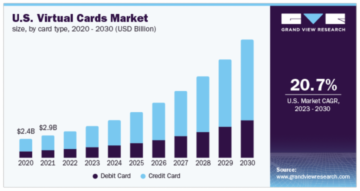A Team8 report, An Unconventional Look At The Future Of Fintech, charts the industry’s path by predicting what remains and changes while taking a few big swings at potential mega-trends. Team8 creates and invests in companies focusing on cybersecurity, data and AI, fintech, and digital health.
One constant is convenience. Any service that simplifies getting consumers what they want begins with an attractive proposition.
Another truism is you can’t fight City Hall. While some fintechs have been founded to exploit a regulatory loophole, Team8 partner Liran Amrany said a more sustainable strategy is to design companies with a compliance-first focus, acknowledging that regulation’s purpose is to foster trust.
Incumbents aren’t going anywhere. This isn’t the early 2010s when bold startups made their hay by saying they would get rid of the banks. Incumbents in highly regulated sectors like finance are stickier, harder to displace, and significantly more profitable. They enjoy economies of scale and have generated consumer trust.
The report states that the conditions of the last decade from which we are now emerging were anomalous. Amrany said it’s wiser to work with them. Yes, there is a chance a startup could achieve massive scale, but it’s much likelier they’ll get acquired, their service gets replicated by a much better-funded big bank, or their innovation spawns an entire as-a-service sector.
Sorry, folks, but fraud will remain omnipresent. Consider fraud a business where the practitioners want to maximize their ROI. They are early technology adapters, so companies must be vigilant.
Of course, that brings opportunities for fintechs in fraud detection and prevention. Amrany said one of those could be addressing Generative AI’s impact on fraud, which he said is just beginning. Generative AI’s ability to lower the entry bar for scammers and to assist with better fraud tactics at scale could impact entrepreneurs’ abilities to build companies with manageable fraud risk.
What will change in fintech
Several things will change, beginning with upgraded bank technology. Banks will see acquisitions as an economical means of upgrading technologies, preserving advantages and attracting talent.
Embedded finance will expand, with the more diligent entrepreneurs seeking opportunities in harder-to-reach areas like brick-and-mortar small businesses, non-profits, and local government. Amrany said innovative fintechs like Toast have embedded financial services into the systems. Successful future companies will find ways to embed financial services into their products and with their user bases.
Prepare for interoperability across countries, especially with global payments. The report states that no global payment rail has 100% coverage. Existing infrastructure is slow and expensive. For a glimpse into the future, look to the integration of India’s and Singapore’s digital payments systems.
Amrany sees space for companies to shape such regional synergies, especially in emerging markets that don’t have to contend with clunky infrastructure.
“You’ll see some new payment networks, as they enter the world, to be more set up to be more interoperable, and to have more API connections than most legacy infrastructures we have today.”


Expect new infrastructure to foster opportunities, especially in faster payments and stablecoins. FedNow is designed with third-party developers in mind, meaning rapid growth is likely.
The report states that “dollar-backed stablecoins represent a fast, interoperable, and programmable alternative to the legacy payments systems that currently dominate use cases like cross-border payments, B2B payments, and supply-chain finance.” Many large incumbents, from PayPal to JPMorgan Chase, are experimenting with stablecoin use cases, which is a trend to watch.
Amrany finds better current use cases in developing countries, where folks want to store money in U.S. dollars but can’t. Retail investors are starting to drive demand, which national treasuries usually spur.
“I do see the need for many people who want a more stable currency to hold their money or will put their funds into stablecoins,” he said.
B2B innovation just beginning
A trend just beginning but which will grow is fintech coming to B2B. Legacy providers can’t analyze companies at a granular level, hurting SMEs. By leveraging AI, fintechs can verify creditworthiness, assess risk, and better process financing.
Countries approach open finance in different ways. Early practitioners are mostly legislation-driven, with the benefits of standardization and ubiquity but the downside of narrow scope.
The U.S. is taking a more encouraging stance.
“The U.S. market’s more expansive definition of open finance is about to be codified into regulation, as the CFPB has finally proposed its rules for data sharing via Section 1033 of the Dodd-Frank Act,” the report states. “These rules, which will start with a narrow focus and expand over time, will significantly improve the reliability and general performance of financial data sharing between banks and non-banks.”
Compliance will become a competitive differentiator as companies realize it’s cheaper to invest in compliance from the beginning. Investment in staffing and technology will rise.
Where to aim for the fintech fence
Grand slams might be hit in digital identities, self-custody, fully immersive financial services, and financial services where climate concerns reset incentives.
“I think the possibilities, the ways that people are going to manage their money, will change quite a lot over the next decade,” Amrany predicted. “Digital identity is really interesting. We don’t know exactly what that will look like yet; we don’t know if it’s Google or Facebook, whether it comes from the banks or the government. With fraud and how that could get scary in the next two to four years, digital identity is the one thing that could get us back to a world where fraud is much more manageable.”
Generative AI promises to shorten the development gap between legacy institutions and startups. Improvements that took banks two years could be reduced to weeks.
“Gen AI can speed up all this so much, as it gets to the point where banks can easily deploy and test Gen AI-generated codes,” Amrany said.
Also read:
.pp-multiple-authors-boxes-wrapper.box-post-id-45383.pp-multiple-authors-layout-boxed.multiple-authors-target-shortcode.box-instance-id-1 .box-header-title { font-size: 20px !important; } .pp-multiple-authors-boxes-wrapper.box-post-id-45383.pp-multiple-authors-layout-boxed.multiple-authors-target-shortcode.box-instance-id-1 .box-header-title { font-weight: bold !important; } .pp-multiple-authors-boxes-wrapper.box-post-id-45383.pp-multiple-authors-layout-boxed.multiple-authors-target-shortcode.box-instance-id-1 .box-header-title { color: #000000 !important; } .pp-multiple-authors-boxes-wrapper.box-post-id-45383.pp-multiple-authors-layout-boxed.multiple-authors-target-shortcode.box-instance-id-1 .pp-author-boxes-avatar img { border-style: none !important; } .pp-multiple-authors-boxes-wrapper.box-post-id-45383.pp-multiple-authors-layout-boxed.multiple-authors-target-shortcode.box-instance-id-1 .pp-author-boxes-avatar img { border-radius: 5% !important; } .pp-multiple-authors-boxes-wrapper.box-post-id-45383.pp-multiple-authors-layout-boxed.multiple-authors-target-shortcode.box-instance-id-1 .pp-author-boxes-name a { font-size: 24px !important; } .pp-multiple-authors-boxes-wrapper.box-post-id-45383.pp-multiple-authors-layout-boxed.multiple-authors-target-shortcode.box-instance-id-1 .pp-author-boxes-name a { font-weight: bold !important; } .pp-multiple-authors-boxes-wrapper.box-post-id-45383.pp-multiple-authors-layout-boxed.multiple-authors-target-shortcode.box-instance-id-1 .pp-author-boxes-name a { color: #000000 !important; } .pp-multiple-authors-boxes-wrapper.box-post-id-45383.pp-multiple-authors-layout-boxed.multiple-authors-target-shortcode.box-instance-id-1 .pp-author-boxes-description { font-style: none !important; } .pp-multiple-authors-boxes-wrapper.box-post-id-45383.pp-multiple-authors-layout-boxed.multiple-authors-target-shortcode.box-instance-id-1 .pp-author-boxes-description { text-align: left !important; } .pp-multiple-authors-boxes-wrapper.box-post-id-45383.pp-multiple-authors-layout-boxed.multiple-authors-target-shortcode.box-instance-id-1 .pp-author-boxes-meta a span { font-size: 20px !important; } .pp-multiple-authors-boxes-wrapper.box-post-id-45383.pp-multiple-authors-layout-boxed.multiple-authors-target-shortcode.box-instance-id-1 .pp-author-boxes-meta a span { font-weight: normal !important; } .pp-multiple-authors-boxes-wrapper.box-post-id-45383.pp-multiple-authors-layout-boxed.multiple-authors-target-shortcode.box-instance-id-1 .pp-author-boxes-meta { text-align: left !important; } .pp-multiple-authors-boxes-wrapper.box-post-id-45383.pp-multiple-authors-layout-boxed.multiple-authors-target-shortcode.box-instance-id-1 .pp-author-boxes-meta a { background-color: #6adc21 !important; } .pp-multiple-authors-boxes-wrapper.box-post-id-45383.pp-multiple-authors-layout-boxed.multiple-authors-target-shortcode.box-instance-id-1 .pp-author-boxes-meta a { color: #ffffff !important; } .pp-multiple-authors-boxes-wrapper.box-post-id-45383.pp-multiple-authors-layout-boxed.multiple-authors-target-shortcode.box-instance-id-1 .pp-author-boxes-meta a:hover { color: #ffffff !important; } .pp-multiple-authors-boxes-wrapper.box-post-id-45383.pp-multiple-authors-layout-boxed.multiple-authors-target-shortcode.box-instance-id-1 .ppma-author-user_url-profile-data { color: #6adc21 !important; } .pp-multiple-authors-boxes-wrapper.box-post-id-45383.pp-multiple-authors-layout-boxed.multiple-authors-target-shortcode.box-instance-id-1 .ppma-author-twitter-profile-data span, .pp-multiple-authors-boxes-wrapper.box-post-id-45383.pp-multiple-authors-layout-boxed.multiple-authors-target-shortcode.box-instance-id-1 .ppma-author-twitter-profile-data i { font-size: 16px !important; } .pp-multiple-authors-boxes-wrapper.box-post-id-45383.pp-multiple-authors-layout-boxed.multiple-authors-target-shortcode.box-instance-id-1 .ppma-author-twitter-profile-data { background-color: #6adc21 !important; } .pp-multiple-authors-boxes-wrapper.box-post-id-45383.pp-multiple-authors-layout-boxed.multiple-authors-target-shortcode.box-instance-id-1 .ppma-author-twitter-profile-data { border-radius: 50% !important; } .pp-multiple-authors-boxes-wrapper.box-post-id-45383.pp-multiple-authors-layout-boxed.multiple-authors-target-shortcode.box-instance-id-1 .ppma-author-twitter-profile-data { text-align: center !important; } .pp-multiple-authors-boxes-wrapper.box-post-id-45383.pp-multiple-authors-layout-boxed.multiple-authors-target-shortcode.box-instance-id-1 .ppma-author-linkedin-profile-data span, .pp-multiple-authors-boxes-wrapper.box-post-id-45383.pp-multiple-authors-layout-boxed.multiple-authors-target-shortcode.box-instance-id-1 .ppma-author-linkedin-profile-data i { font-size: 16px !important; } .pp-multiple-authors-boxes-wrapper.box-post-id-45383.pp-multiple-authors-layout-boxed.multiple-authors-target-shortcode.box-instance-id-1 .ppma-author-linkedin-profile-data { background-color: #6adc21 !important; } .pp-multiple-authors-boxes-wrapper.box-post-id-45383.pp-multiple-authors-layout-boxed.multiple-authors-target-shortcode.box-instance-id-1 .ppma-author-linkedin-profile-data { border-radius: 50% !important; } .pp-multiple-authors-boxes-wrapper.box-post-id-45383.pp-multiple-authors-layout-boxed.multiple-authors-target-shortcode.box-instance-id-1 .pp-author-boxes-recent-posts-title { border-bottom-style: dotted !important; } .pp-multiple-authors-boxes-wrapper.box-post-id-45383.pp-multiple-authors-layout-boxed.multiple-authors-target-shortcode.box-instance-id-1 .pp-multiple-authors-boxes-li { border-style: solid !important; } .pp-multiple-authors-boxes-wrapper.box-post-id-45383.pp-multiple-authors-layout-boxed.multiple-authors-target-shortcode.box-instance-id-1 .pp-multiple-authors-boxes-li { color: #3c434a !important; }
- SEO Powered Content & PR Distribution. Get Amplified Today.
- PlatoData.Network Vertical Generative Ai. Empower Yourself. Access Here.
- PlatoAiStream. Web3 Intelligence. Knowledge Amplified. Access Here.
- PlatoESG. Carbon, CleanTech, Energy, Environment, Solar, Waste Management. Access Here.
- PlatoHealth. Biotech and Clinical Trials Intelligence. Access Here.
- Source: https://www.fintechnexus.com/team8-charts-fintechs-future/
- :has
- :is
- :where
- $UP
- 000
- 1
- 2%
- 2010s
- 2018
- a
- abilities
- ability
- About
- Achieve
- acquired
- acquisitions
- across
- Act
- addressing
- advantages
- AI
- aim
- All
- alternative
- an
- analyze
- and
- any
- anywhere
- api
- approach
- ARE
- areas
- articles
- AS
- assess
- assist
- At
- attracting
- attractive
- avatar
- B2B
- B2B payments
- back
- Bank
- Banks
- bar
- BE
- become
- been
- Beginning
- begins
- benefits
- Better
- between
- Big
- blockchain
- bold
- Brings
- build
- business
- businesses
- but
- by
- CAN
- cases
- Center
- CFPB
- Chance
- change
- Changes
- Charts
- chase
- cheaper
- City
- Climate
- code
- Codes
- codified
- color
- COM
- comes
- coming
- Companies
- competitive
- compliance
- Concerns
- conditions
- Connections
- Consider
- constant
- consumer
- Consumers
- contend
- contributor
- convenience
- could
- countries
- course
- coverage
- creates
- creditworthiness
- cross-border
- cross-border payments
- Crowdfunding
- Currency
- Current
- Currently
- Cybersecurity
- data
- data sharing
- decade
- definition
- Demand
- deploy
- Design
- designed
- Detection
- developers
- developing
- Developing Countries
- Development
- different
- differentiator
- digital
- Digital Health
- digital identity
- Digital Payments
- do
- dollars
- dominate
- Dont
- downside
- drive
- Early
- easily
- economies
- Economies of Scale
- embed
- embedded
- emerging
- emerging markets
- emerging technologies
- encouraging
- enjoy
- Enter
- Entire
- entrepreneurs
- entry
- especially
- exactly
- existing
- Expand
- expansive
- expensive
- experimenting
- Exploit
- FAST
- faster
- fednow
- few
- fight
- Finally
- finance
- financial
- financial data
- financial services
- financing
- Find
- finds
- fintech
- fintechs
- Focus
- focusing
- For
- Foster
- Founded
- four
- fraud
- fraud detection
- Fraud Risk
- from
- fully
- funds
- future
- gap
- Gen
- General
- generated
- generative
- get
- gets
- getting
- Glimpse
- Global
- Global Payments
- going
- Government
- granular
- Grow
- Growth
- Hall
- harder
- Have
- hay
- he
- Health
- highly
- Hit
- hold
- Hong
- Hong Kong
- hosted
- hover
- How
- HTML
- HTTPS
- i
- identities
- Identity
- if
- immersive
- Impact
- improve
- improvements
- in
- Incentives
- industry’s
- Infrastructure
- infrastructures
- Innovation
- innovative
- institutions
- integration
- interesting
- Interoperability
- interoperable
- into
- Invest
- investment
- Investors
- Invests
- IT
- ITS
- journalist
- jpg
- JPMorgan
- jpmorgan chase
- just
- Know
- Kong
- large
- Last
- left
- Legacy
- lending
- Level
- leveraging
- like
- likely
- local
- Local Government
- Look
- look like
- loophole
- Lot
- lower
- made
- manage
- manageable
- many
- many people
- Markets
- massive
- max-width
- Maximize
- meaning
- means
- might
- mind
- money
- more
- most
- mostly
- much
- must
- narrow
- National
- Need
- networks
- New
- next
- no
- Non-Profits
- None
- normal
- now
- of
- on
- ONE
- open
- opportunities
- or
- original
- over
- panels
- partner
- past
- path
- payment
- payment networks
- payments
- payments systems
- PayPal
- peer to peer
- peer-to-peer lending
- People
- performance
- plato
- Plato Data Intelligence
- PlatoData
- Point
- possibilities
- potential
- practitioners
- predicted
- predicting
- preserving
- Prevention
- PRNewswire
- process
- Products
- profitable
- programmable
- promises
- proposed
- proposition
- providers
- purpose
- put
- quite
- Rail
- rapid
- Read
- realize
- really
- Reduced
- regional
- regulated
- Regulation
- regulatory
- reliability
- remain
- remains
- replicated
- report
- represent
- retail
- Retail Investors
- Rid
- Rise
- Risk
- ROI
- rules
- s
- Said
- saying
- Scale
- Scammers
- scope
- Section
- sector
- Sectors
- see
- seeking
- sees
- Self Custody
- service
- Services
- set
- seven
- Shape
- sharing
- significantly
- simplifies
- Singapore’s
- Slams
- slow
- small
- small businesses
- SMEs
- So
- solid
- some
- Space
- spaces
- span
- speed
- stable
- stablecoin
- Stablecoins
- staffing
- stance
- standardization
- start
- Starting
- startup
- Startups
- States
- store
- Strategy
- strong
- successful
- such
- Summit
- sustainable
- Swings
- synergies
- Systems
- tactics
- taking
- Talent
- Technologies
- Technology
- test
- than
- that
- The
- The Future
- the world
- their
- Them
- There.
- they
- thing
- things
- Think
- third-party
- this
- those
- time
- to
- toast
- today
- Tony
- took
- Treasuries
- Trend
- Trust
- two
- u.s.
- U.S. Dollars
- Unchained
- unconventional
- upgraded
- us
- use
- User
- usually
- verify
- via
- want
- Watch
- ways
- we
- Weeks
- were
- What
- when
- whether
- which
- while
- WHO
- will
- with
- Work
- world
- would
- written
- year
- years
- yes
- yet
- you
- zephyrnet






